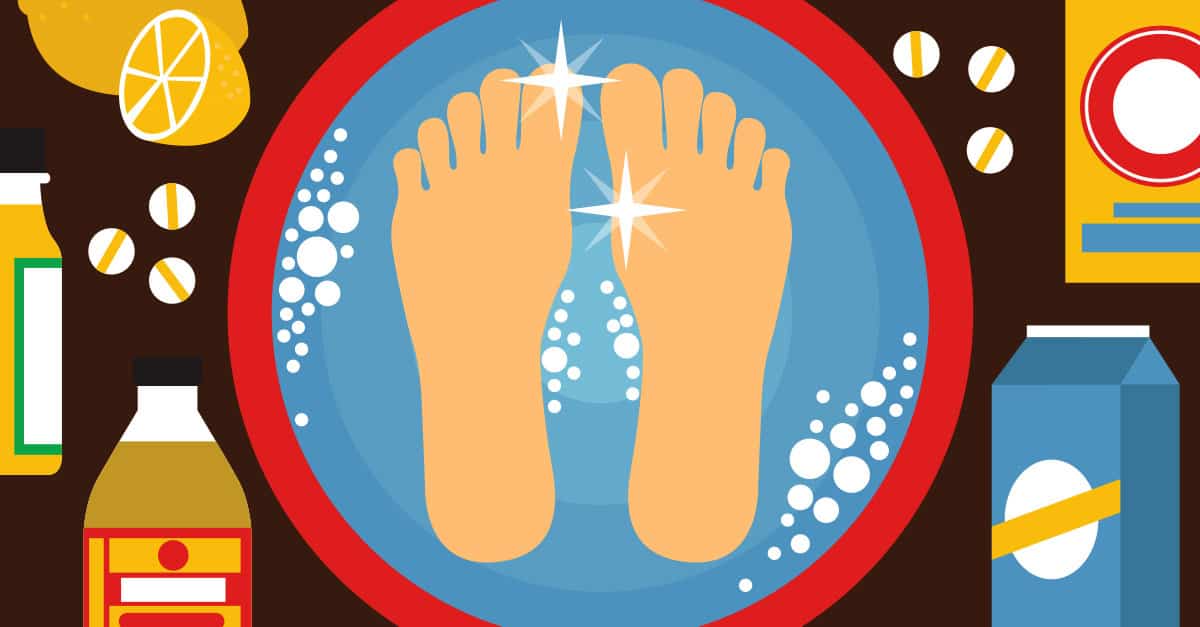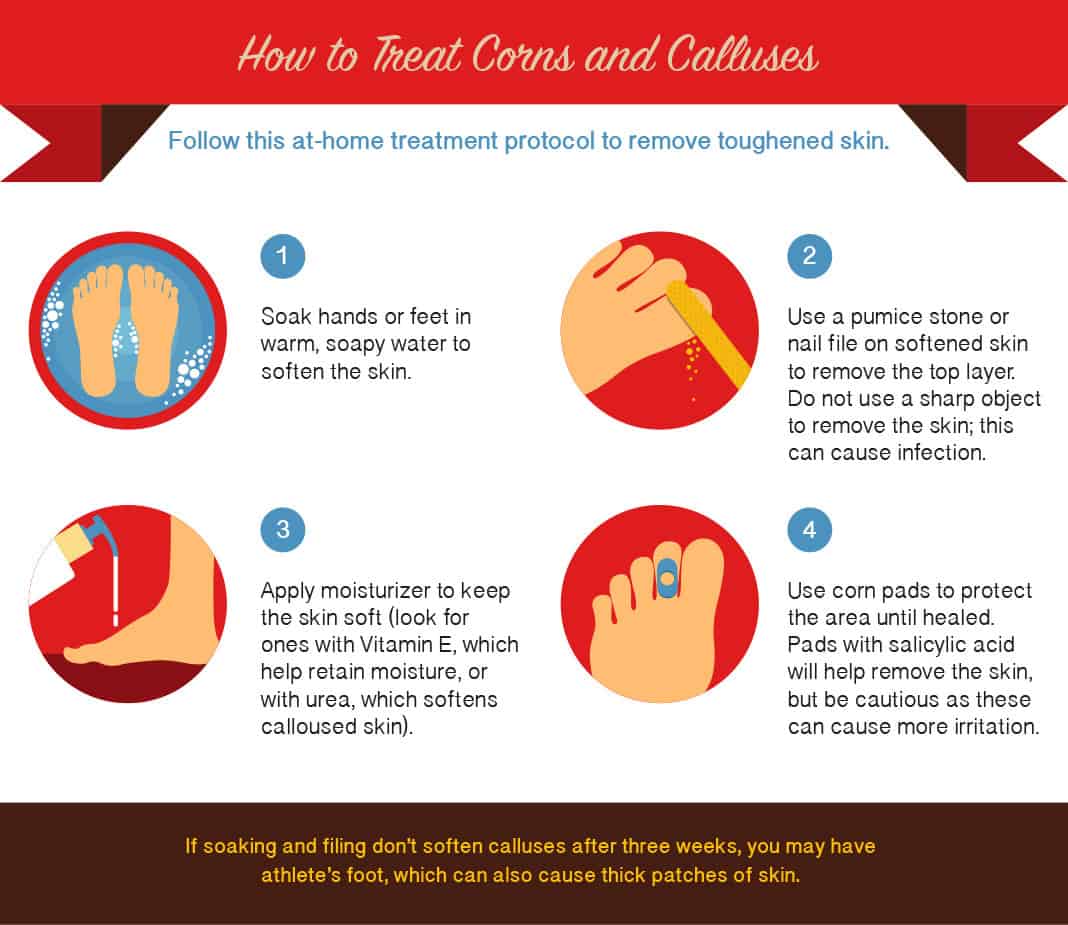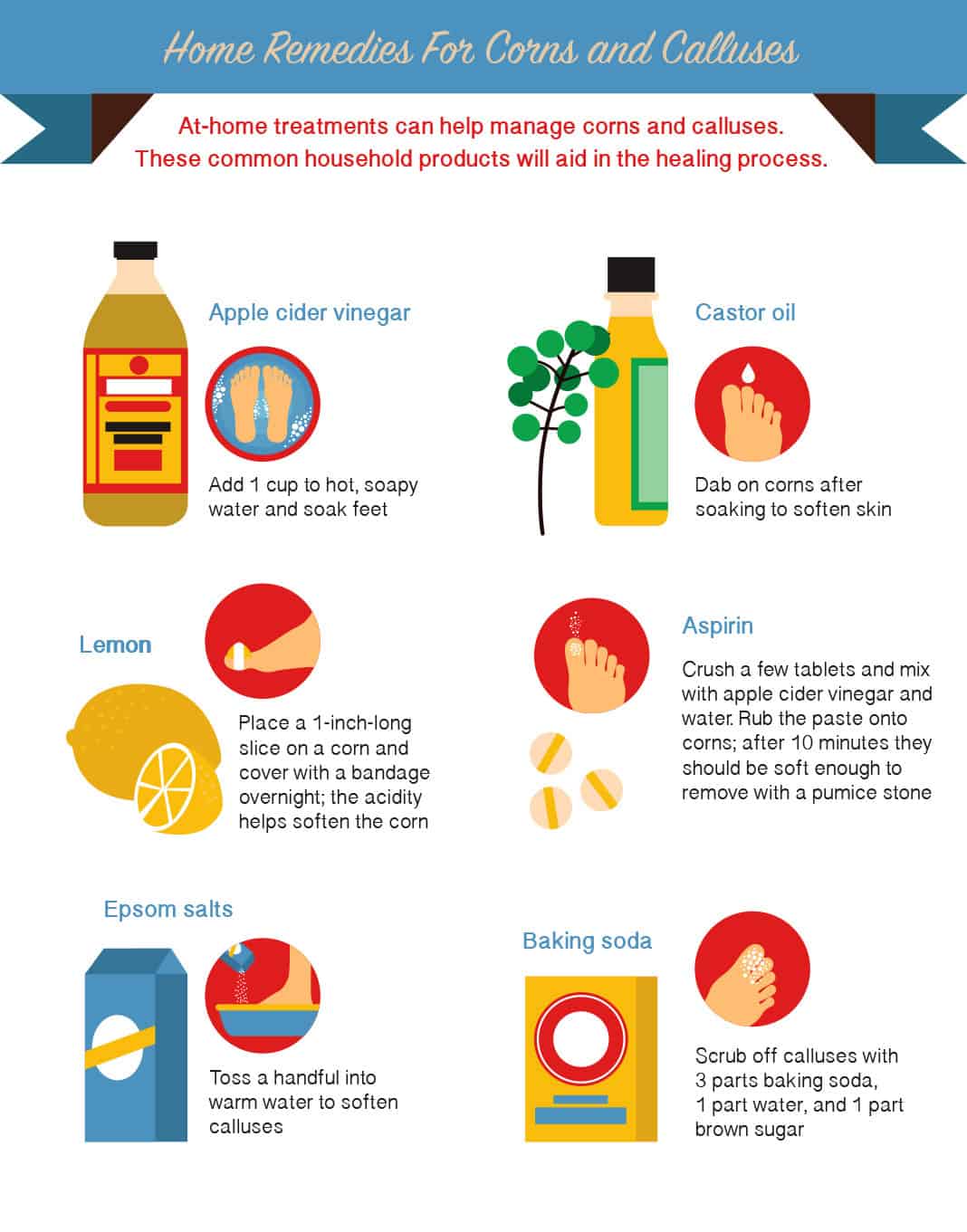Learn the causes, treatment, and prevention of corns and calluses.
Corns and calluses are thickened areas of skin caused by repeated friction or pressure. While they are not harmful to your health, the leathery patches can be painful and irritating when not properly removed. Calluses tend to form on the heel, balls of the feet, and hands and help to protect skin from blisters. Corns, on the other hand, are smaller, more painful skin growths that often form on the tips of toes. Learn the causes of each condition, how to prevent and treat them, and when it’s time to see a doctor.
Causes
The most common cause of corns and calluses is ill-fitting shoes. Shoes are too tight if there’s no room to wiggle the toes and they’re too big if feet slide (which causes additional friction). Calluses can also form when wearing shoes or sandals without socks or frequently wearing high heels. Farmers, athletes, and others who consistently grip tools and weights can also develop calluses on their hands. Corns mostly develop on the insides or tips of toes as a result of wearing ill-fitting shoes.
Treatment
It’s easy to treat both calluses and corns at home. (Note: Talk to a doctor if you have any health issues including diabetes, which can heighten the chances of infection). The first step in treatment is to avoid the action that causes them. Wear the correct size shoe, add inserts to prevent rubbing, and wear gloves when working with your hands.
Prevention
Always wear comfortable shoes with padding and socks. Make sure your toes have enough room to wiggle. Shoes too narrow? Try this trick: Put your shoes on while wearing a pair of thick socks and blow-dry each foot for a few seconds. Leave them on until they cool and repeat if necessary, or take your shoes to a cobbler to get professionally stretched (it can’t be undone!). If you work a lot with your hands, make sure to wear gloves before handling tools.
When to see a doctor
See a doctor if the problem persists, you’re unsure of the cause, or if you have diabetes. Diabetes causes poor blood flow and can heighten your chance of infection, so leave it to the doctor to trim away excess skin and prescribe a salicylic acid treatment. Your doctor will examine the thickened skin to rule out other causes like warts or cysts. They may also suggest an antibiotic treatment to prevent infection.
Corns and calluses are easy to remove by repeating the steps above and avoiding tight shoes and other causes of friction. Don’t try to remove all the tough skin at once—that’ll make the callus worse! Instead, use a pumice stone after each soak or bath to gently remove the top layers of corns and calluses until gone. At bedtime, cover your feet with socks to retain lotion and prevent corn pads from slipping.



